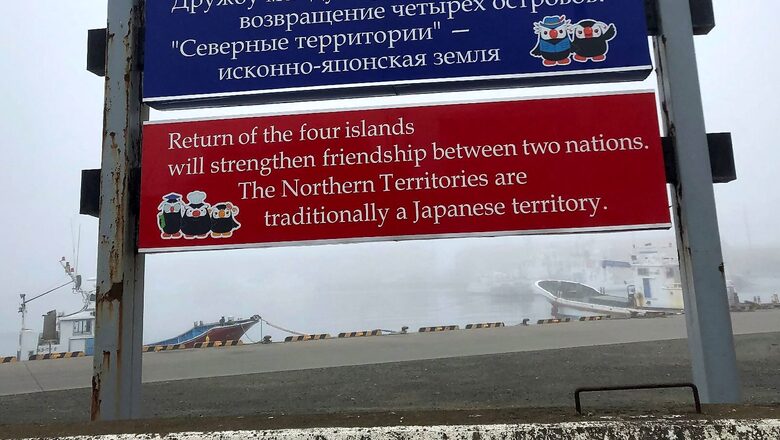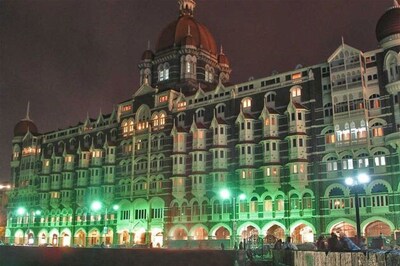
views
Japan for the first time said that Russia has illegally occupied four islands near the Kamchatka Peninsula. The Japanese have called these islands – the Northern Territories – while Russia calls them the Kurils.
The chain of islands stretches north across the Pacific Ocean from the Japan’s Hokkaido to the southernmost tip of Russia’s Kamchatka Peninsula
These islands have been a longstanding issue between Moscow and Tokyo and the Fumio Kishida-led government in Tokyo have upped their ante over the ownership of the islands. This is the first time in almost 20 years that Japan has called the islands ‘illegally occupied’.
The expression was used last in 2003 by the Japanese foreign ministry. “The greatest concern between Japan and Russia is the Northern Territories. Japanese territories over which Japan holds sovereign rights, but are currently illegally occupied by Russia,” the Diplomatic Bluebook released by Japan said.
Japan has also ramped up its sanctions on Russia and said that the dispute will stall its treaty talks with Russia. Moscow last month said that it will discontinue talks and said that it is impossible to continue discussions ‘with a country that has taken an openly hostile position and is striving to cause harm to the interest of our country’.
The dispute dates back to the end of the second World War when the Soviet Union won the war against the Axis powers of which Japan was a member. In Russia, the popular view is that Russia has ownership of the islands and the loss of Japanese territory is due to its loss in the second World War. “Japan was defeated and must pay for it in the same way as Germany did. Germany, which had to cede to Russia the vast territory of Prussia, is not making any territorial claims. The territorial claims of Japan manifest its aggressive nature. If Russia cedes the four islands, Japan will demand the rest of the islands at once,” writes Viacheslav Yatsko in a blog called Bewildering Stories.
The Japanese side, however, argues that the Japanese travelled to the islands in the 16th century nearly 200 years before Russians arrived.
Following the end of the second World War, the 1951 San Francisco Peace Treaty was signed between Japan and the Allied Forces where Japan renounced “all right, title and claim to the Kuril Islands”, as well as over other possessions but it did not solve anything as Russia was not signatory and the Japanese government has never recognised the four islands as part of the Kuril chain.
Russia proposed returning the two islands closest to Japan in the 50s but Japan rejected the offer. The islands that Japan considers its own are named Kunashiri (known in Russian as Kunashir), Etorofu (Iturup), Shikotan and the Habomai islets.
Meanwhile, Russia has performed military drills in the region thus intensifying fears that the Quad and AUKUS’ shared aim of ‘free and Indo-Pacific’ could be threatened due to the Kuril Islands dispute. China’s ties with Japan are fraught due to the Senkaku Islands while the Kuril Islands dispute may see Beijing and Moscow grow closer to each other to isolate Japan thus creating a tense atmosphere in the Indo-Pacific.
Japan, however, has not chosen to isolate China. On Friday, Japan said that a constructive relationship with China is best for both parties purposefully not alluding directly to the Senkaku Islands dispute. Japan, however, said that China tries to ‘change the status quo by force in the East and South China Seas’
“It is important to build a constructive and stable Japan-China relationship,” Japan said in its Diplomatic Bluebook report.
Japan also will continue its investments in Sakhalin-1, Sakhalin-2 and Arctic LNG 2 (ARC 2) projects as it deems these investments essential for its energy security. Japanese companies METI, Itochu, Japan Petroleum Exploration Company, Marubeni and Inpex as well as Mitsui and Mitsubishi among others fund these projects.
Read all the Latest News here
















Comments
0 comment